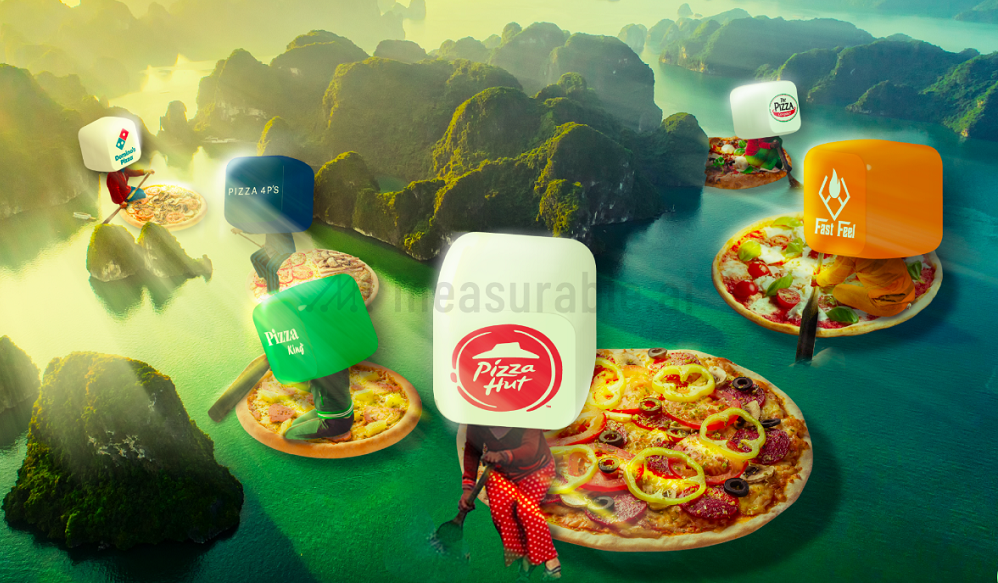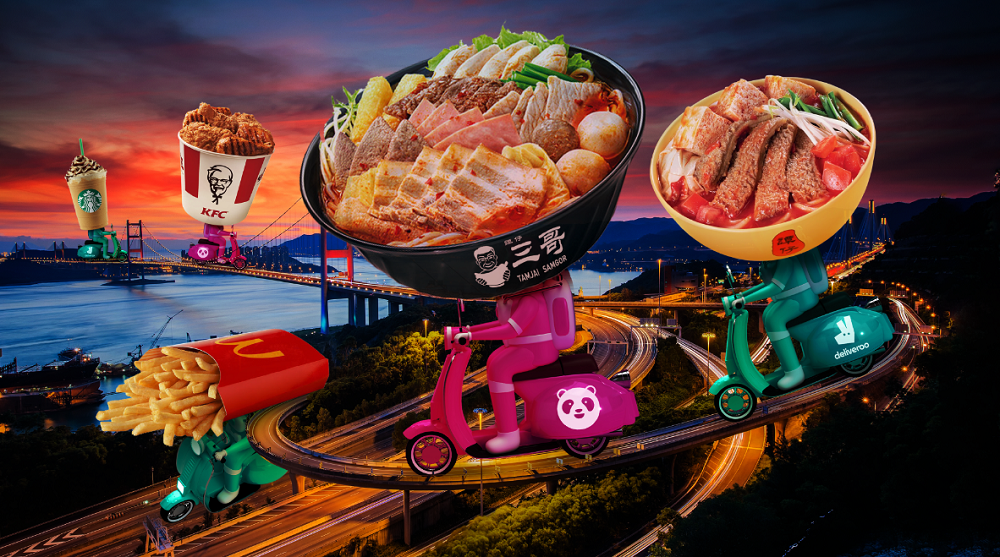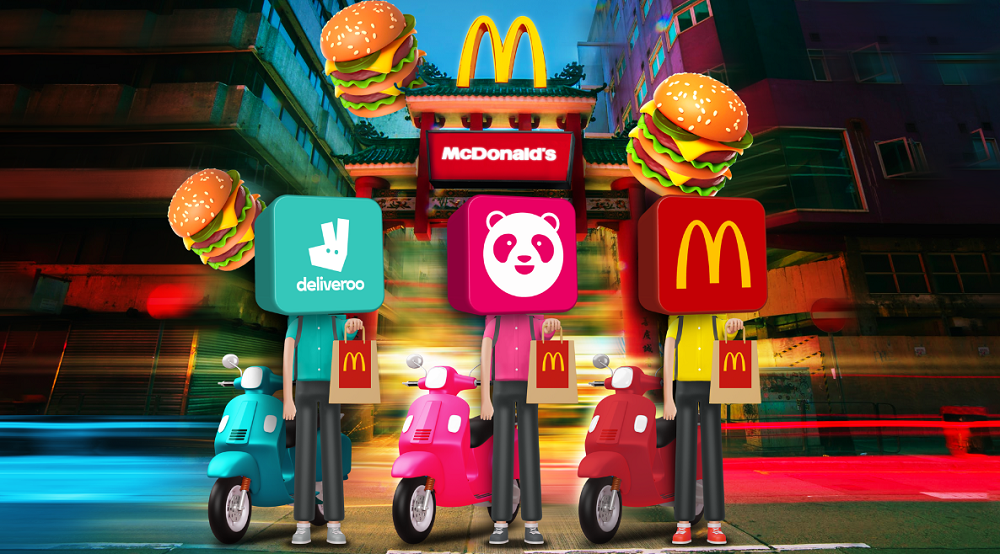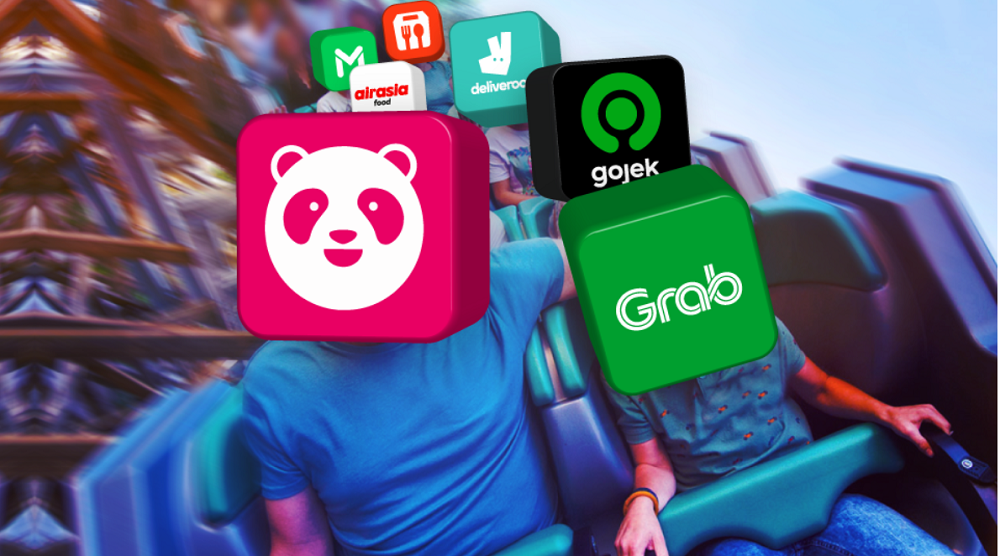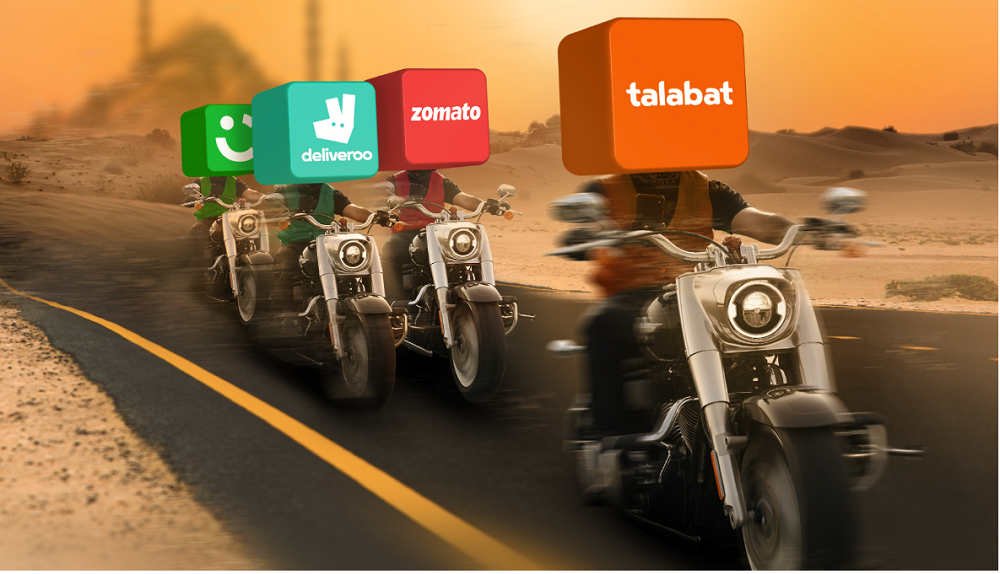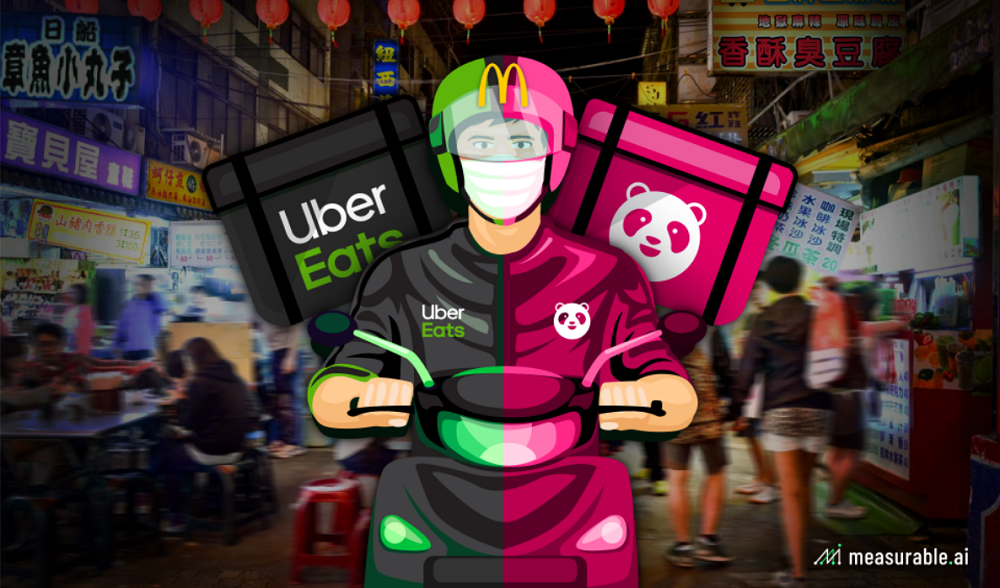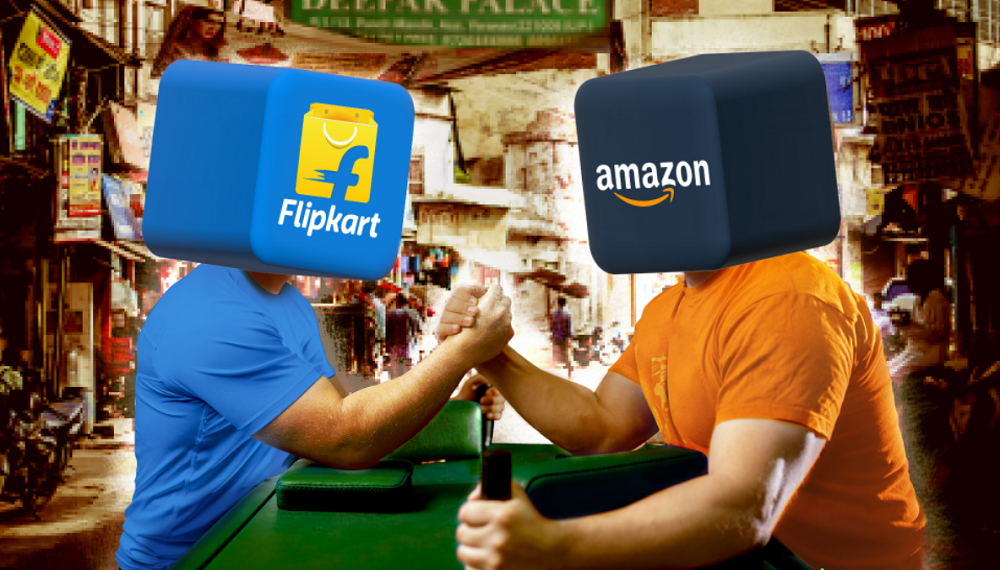Pizza has always been one of the most popular fast food delivery options. After all, who has the willpower to refuse an alluring slice of pizza? Measurable AI is the largest e-receipt data provider for the emerging markets specializing in the digital economy. In light of Pi day yesterday (14th March), we take a look at our own “pie” data – i.e. pizza. In particular, we delve into the Vietnamese pizza delivery market as discerned from our 2H22 Grab dataset to see what insights can be unearthed. Some food for thought indeed.
In Indonesia’s ride-hailing market, Gojek and Grab have been dominating as the two main players. When it comes to order volume across the year 2022, the two companies are competing head to head with very close market share. As of 2023 January, the two companies equally share the market at around 50% by order volume including both two-wheelers and four-wheelers, according to Measurable AI’s very own unique e-receipts panel.
Just a few months since its debut, the free ChatGPT chatbot and its peer products powered by OpenAI have become all the rage. Curious to understand the adoption trend since its launch and who the major users of ChatGPT are, we at Measurable AI take a dig into our “treasure trove of insights” garnered from our proprietary email receipt panel.
Ciao! It’s believed that the first ever food delivery took place in Naples, Italy in 1889, where King Umberto I and Queen Margherita received the first pizza delivery. Fast forward to over 100 years later, Italy’s food delivery market has grown to be around USD$1.15 billion in 2022 (forecast by Statistica). Let’s take a look at the market share of the Italian food delivery market occupied by the four players Deliveroo, JustEat, Glovo and UberEats.
Keep up with the food delivery market in every market with Measurable AI’s transactional e-receipts data panel. This week we did an overview of the food delivery market in Europe throughout the past few years. First stop, España. Looking back, the Spain food delivery market has been quite competitive with over four players in the game: Glovo, JustEat, UberEats and Deliveroo. In 2020, Glovo was on a par with JustEat at around 35% of the market share by revenues.
Welcome to the quarter final of the Japan Food Delivery Race in 2022. A lot has happened in the first half of this year: In January, Foodpanda divested its Japanese business and in May, DidiFood left, followed by Rakuten Delivery who paused its delivery service in July. After two years of competition, the final teams are now: UberEats, Demae-can, Doordash, Wolt, and Menu.
Spicy and numbing broth, smooth yet chewy rice noodles, affordable menu prices, and waitresses known as “TamJai Jeh Jeh” with distinctive accents… With all these features, TamJai noodle chains are rapidly taking over every district in Hong Kong. Tam Jai International (HKEX: 2217), which runs TamJai Yunnan Mixian (譚仔雲南米線) (“TamJai”) and TamJai SamGor Mixian (譚仔三哥米線) (“SamGor”), is now wholly owned by Japan’s largest restaurant operator Toridoll Holdings Corporation(TSE: 3397).Apart from serving Yunnan-style rice noodles in Hong Kong, Tam Jai International also expanded its restaurants in Mainland China, Singapore, and Japan.
There is Fast and Furious when it comes to the ride-sharing business. Here’s an update on the ride-sharing race between the two biggest companies in Southeast Asia: Gojek versus Grab for the first half of 2022. After the past challenging years for mobility amid the pandemic, both companies have seen some rebound in ride-sharing business in Indonesia, Southeast Asia’s largest market. What’s the score now?
Latin America, home to some of the most urbanized cities in the world, is one of the fastest growth spots for ride-hailing. Traffic congestion, limited public transport infrastructure make it difficult to cope with peak demand during morning commute times in large cities like Sao Paulo, Mexico City and Bogota. Amidst the intense rivalry amongst ride hailing companies in Latin America, Measurable AI’s transactional e-receipt panel reveals that Uber and 99 (owned by Chinese ride-hailing company Didi Chuxing) are the major rivals in these two markets.
The Hong Kong food and restaurant industry is a monopoly whereby several companies own the majority of the businesses. As such, this makes it difficult to not walk into a restaurant chain in Hong Kong when you dine out. Similarly, on food delivery platforms, choices are limited to several big restaurant chains. Which restaurant chain is winning over the food delivery apps? According to Measurable AI’s transactional e-receipt data, McDonalds, KFC, TamJai, and Cafe de carol are some top restaurant chains on food delivery platforms Foodpanda(ETR: DHER) and Deliveroo(LON: ROO). Let’s look deeper into their market share on each platform.
According to consulting firm Quinlan and Associates, the virtual banking industry in Hong Kong is forecasted to create a HK$76 billion ($9.7 billion) per annum revenue opportunity by 2025, servicing a total customer pool of 1.9 million (i.e. 24.9% of the current Hong Kong population). In 2019, the Hong Kong Monetary Authority licensed eight virtual banks. These eight firms are: ZA Bank, Mox Bank, WeLab, Airstar, Livi, PAOB, Ant Bank and Fusion.
As we endure the third year of Covid-19, most people have adjusted to the ‘new normal’ and returned back to working in the office. While it is not surprising to witness a pull back on purchases relating to remote work, what about food delivery? Looking at Asia alone and digging into Measurable AI’s consumer panel, the data reveals that users are actually becoming more loyal now to the leading food aggregators than ever before.
Not all Big Macs are equal. Well, that’s when it comes to Big Macs you order online from any of the food delivery apps. They may all seemingly look and taste the same, but when you press the “order” confirm button, they will arrive at different times. More importantly, you will be charged different prices depending on which delivery service you order your Big Mac from.
In 2022, main players in the Southeast Asia food delivery market remain Grab, Foodpanda, Gojek, followed by Deliveroo, Shopee Food, and new joiner Airasia Food. This insight article will provide you with a quick overview of the Southeast Asia on-demand food delivery market across metrics such as market share, consumer spending analysis, and user overlap in Singapore, Malaysia, Indonesia, Thailand and Philippines – all calculated based on Measurable AI’s latest transactional data.
When it comes to the food delivery aggregators in the Middle East, ever wonder who is catering to the Emiratis’ hankerings in the United Arab Emirates? Or curious to find out how much does the average UAE consumer spend on each of the major food delivery services? What about the frequency in which they are ordering food delivery services across or from each of the food delivery apps and which dishes are the most popular for the Middle Eastern palate?
Southeast Asia’s ride-hailing market keeps evolving as more players join and as users’ behavior shifts. As most of the Southeast Asian countries reopen, the ride-hailing market has gradually grown back to normal pre-covid figures. In Thailand, Bolt and Grab are the two major ride-hailing apps still in the game after Gojek sold its Thai business to Airasia last year. At Measurable AI, we build and own a unique consumer panel and are the largest transactional email receipt data provider for the emerging markets. We are well regarded for our comprehensive dataset across the digital economy including the ride-hailing industry.
Online Food Delivery apps are changing the traditional fast food restaurant business. With their user-friendly experience, professional driver network, and rapid global expansion, many fast food chains have chosen to onboard the food delivery platforms to keep up with the on-demand economy. At Measurable AI, we build and own a unique consumer panel and are the largest transactional email receipt data provider for the emerging markets.
In an era where data-driven decision making and business intelligence are becoming increasingly important, businesses and investors are perpetually seeking faster ways to gauge what is going on in the market and how to better position themselves for success. One way to achieve this is to leverage alternative data sources such as e-receipts data. In this article, we will explore how e-receipt data can be utilized to help further business intelligence or facilitate the investment process when it comes to arriving at predictions.
With the grand and young population, the Philippines digital economy is emerging to be one of the fastest growing among its peers in Southeast Asia and is touted to become the next asia tiger economy. Previously, we’ve shared the food delivery landscape in many markets across southeast asia. This time, we’re going to look deeper into the competition between Foodpanda and Grab in the islands of Philippines. Who’s winning and what’s the latest score?
When you talk about Indian e-commerce, Amazon and Flipkart are the rulers in this hotly contested space. Flipkart, a homegrown e-commerce platform, and Amazon’s Indian arm each reportedly have market shares of over 30% in the country’s online retail market. In this article, we take a look at our transactional e-receipt consumer panel in India to see what consumer intelligence and actionable insights we can extract.







